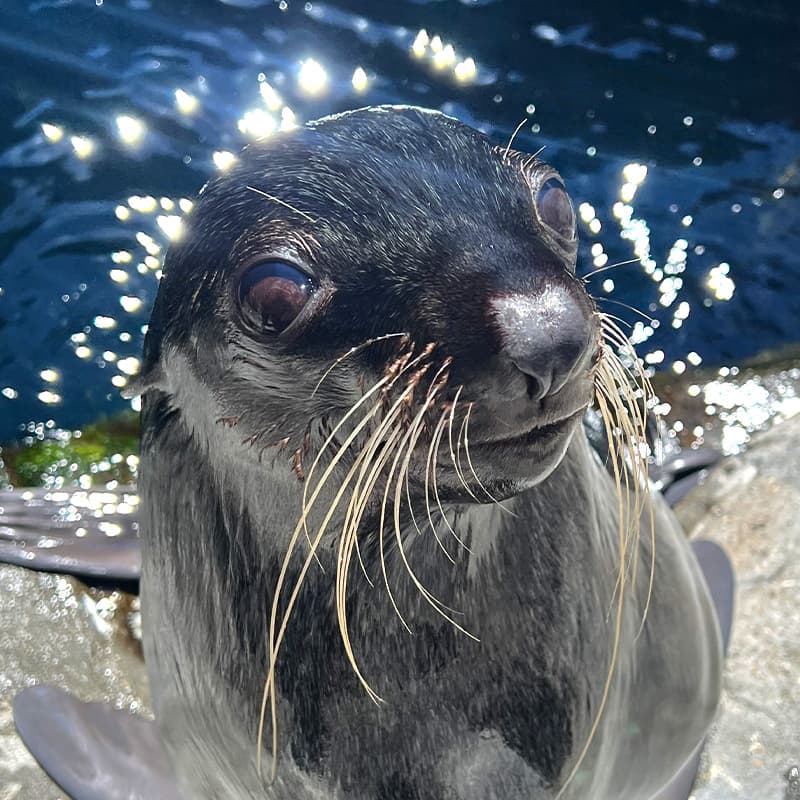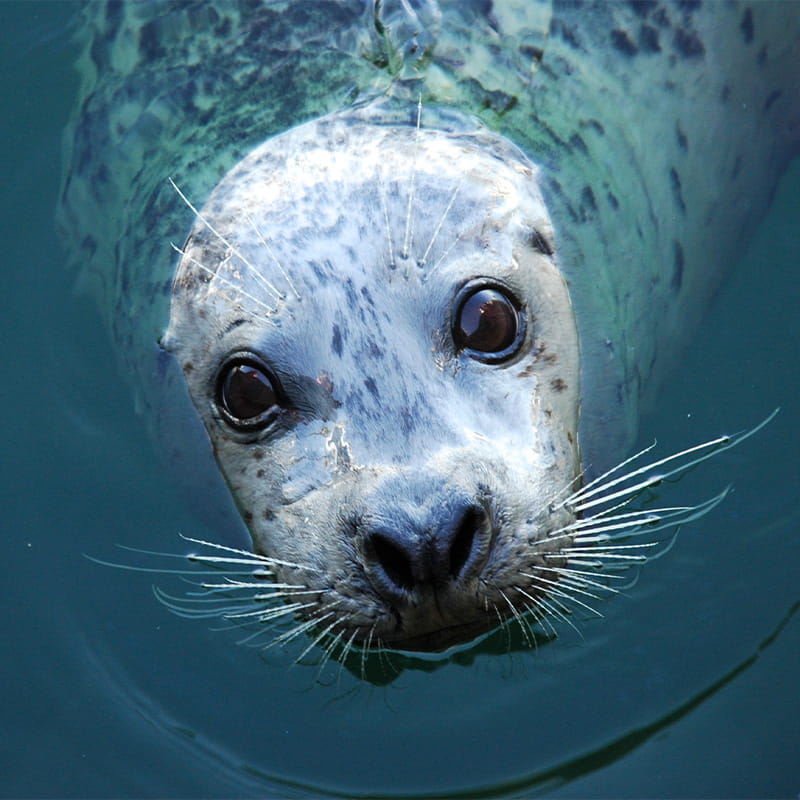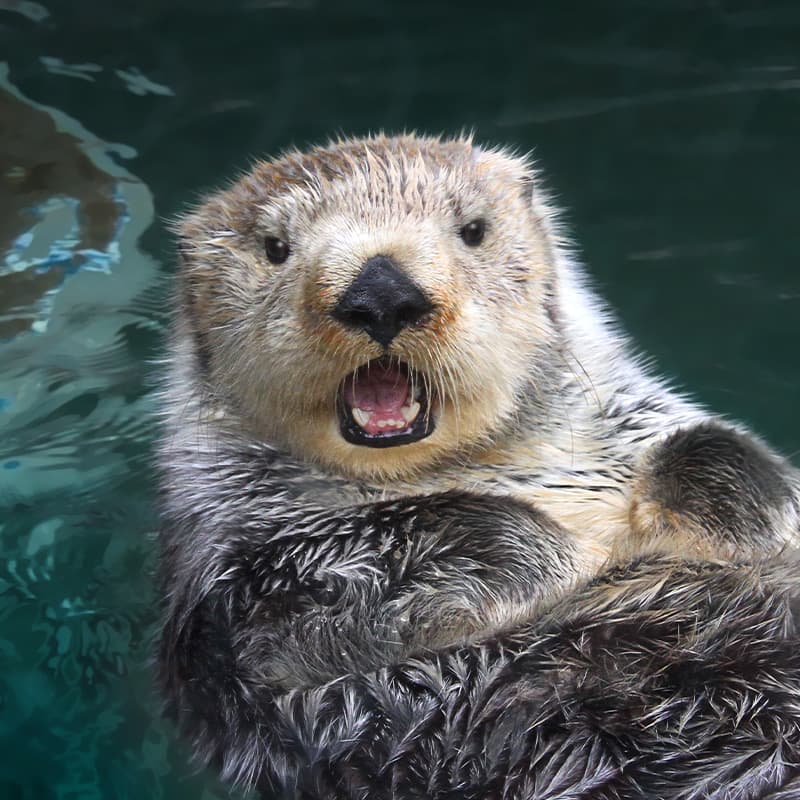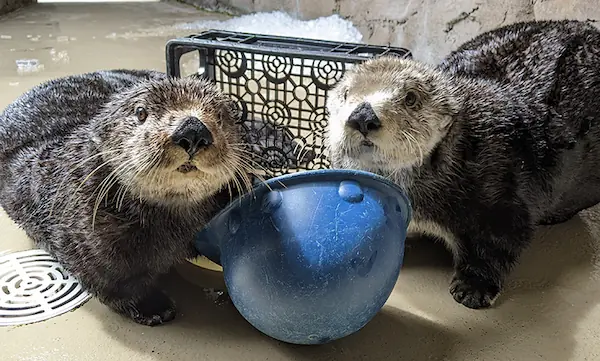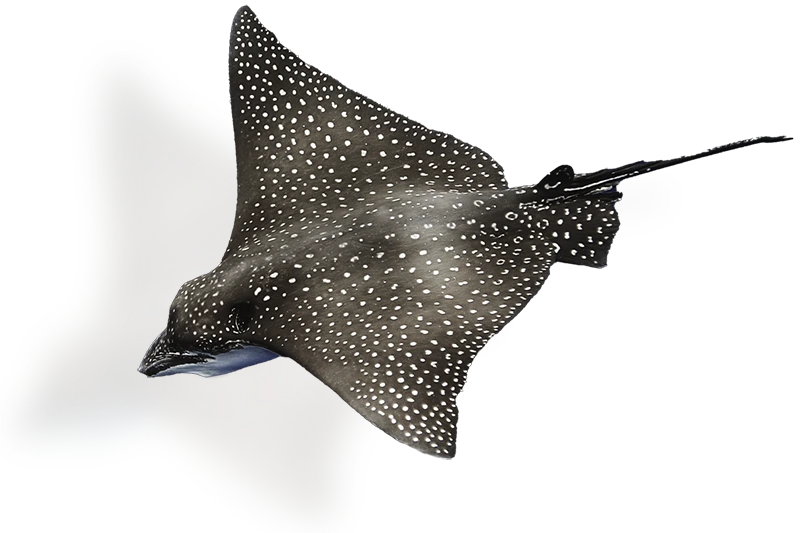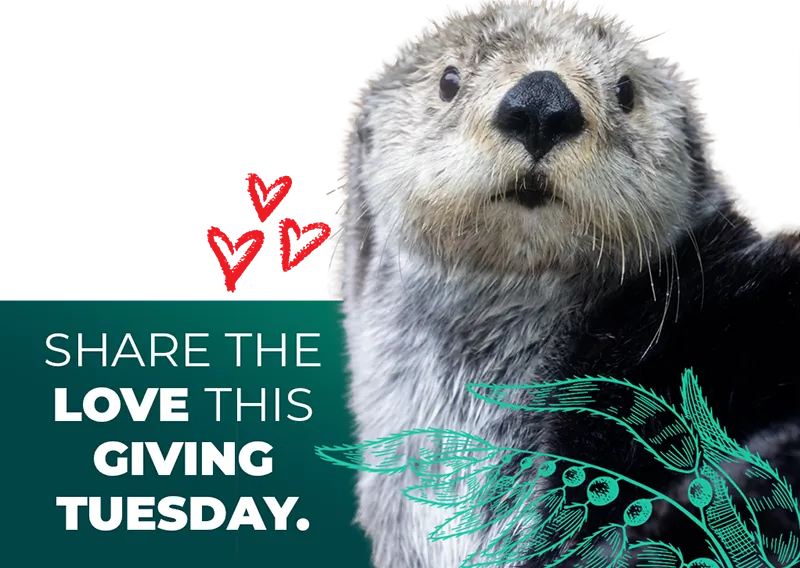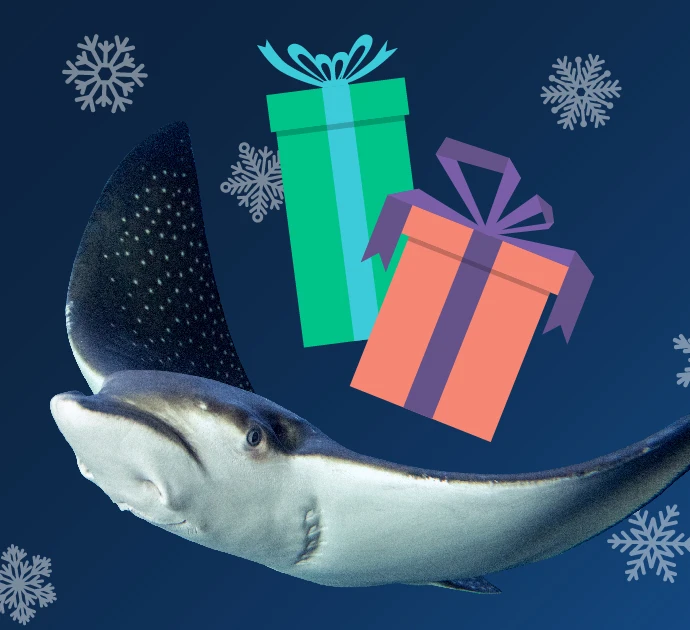- Mammals
River otter
Introducing our playful, always-entertaining river otters, Molalla and Ahanu!
These fun-loving, raucous boys spend a great deal of time on land exploring, searching for food, clowning around and generally having a great time—much to the delight of our visitors.
At the Aquarium
- River otter habitat, Pier 60
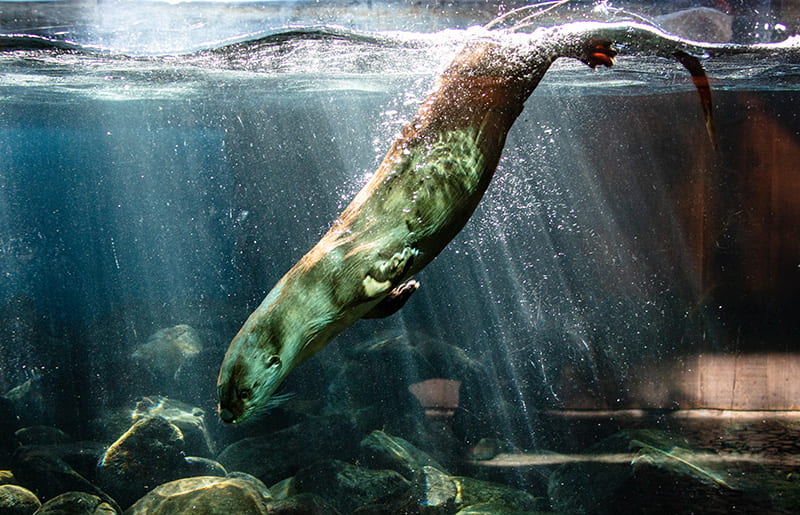
Living Large
In the wild, river otters make their homes in a variety of habitats, near both marine and fresh water. In coastal waters, they can be found traveling and foraging in estuaries, marshes and the lower parts of streams. Inland, they’re found in lowland marshes and swamps, streams and small lakes. River otters live in dens, which they can make themselves in shrubbery or along riverbanks—and they are also happy to take up residence in abandoned beaver, badger, fox or rabbit dwellings.
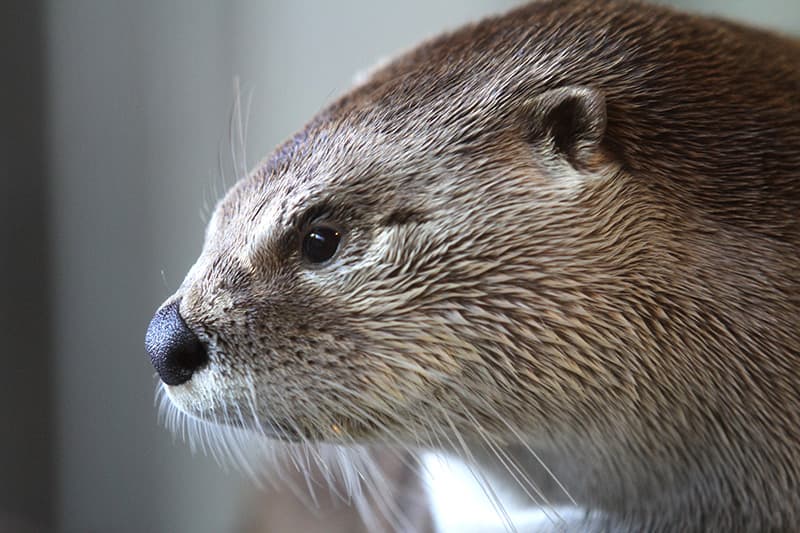
Keeping it Clean
Like many land mammals, river otters use their fur coats to keep warm. River otters need to groom their fur frequently to maintain its water resistance and insulating properties. When you come to the Seattle Aquarium, you may be lucky enough to see Molalla “squeegee-ing” the water from his fur against one of the habitat's hard surfaces.
Who’s who? River otters vs sea otters
Many people don’t know the difference between sea otters and river otters—but, with a little info, you’ll be able to tell right away.
First, sea otters are two to three times the size of river otters—and, when at the water’s surface, they float on their backs, while river otters swim belly down like most animals. Next, the tail of a sea otter is short and flattened; a river otter’s tail is long and pointed. Also, sea otters spend most of their lives in the water, where they breed, give birth, hunt for food and sleep. River otters live most of their lives on solid ground and use the water to travel and find food.
There are other important differences between these two species as well: Northern sea otters are found only in coastal areas, with a range that extends north from the Washington coast, along the outer edge of Vancouver Island, and up to Alaska. They are occasionally seen along the Straits of Juan de Fuca near Port Angeles, but they rarely venture further inland than that. River otters in our region, on the other hand, are found all over Washington state and are commonly seen in pond and stream habitats as well as Puget Sound. Also, female sea otters give birth to just one pup at a time—river otters may give birth to several cubs in a litter.
Quick facts
Adult river otters are approximately 20 to 25 pounds.
Their diet consists of fish, frogs, crayfish, snails, rodents and birds.
River otters are usually found alone or in family groups.
